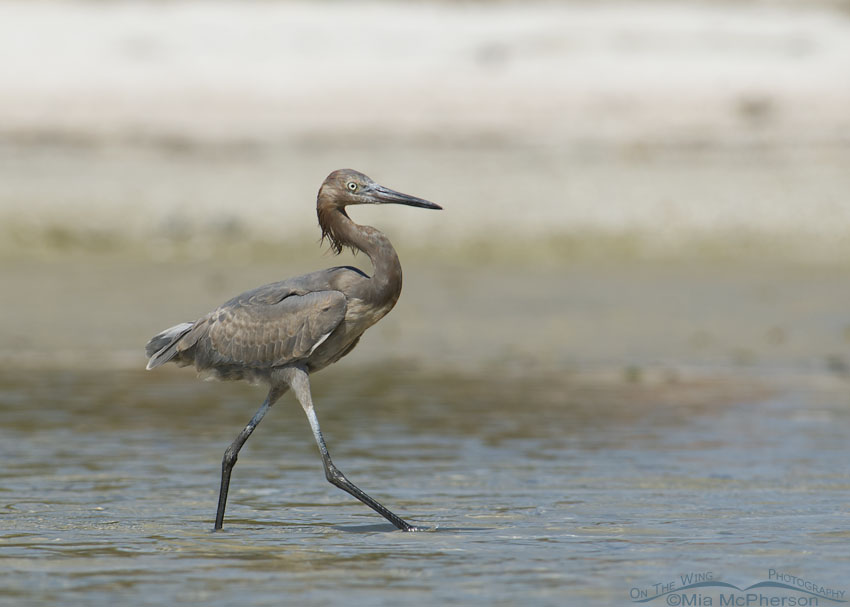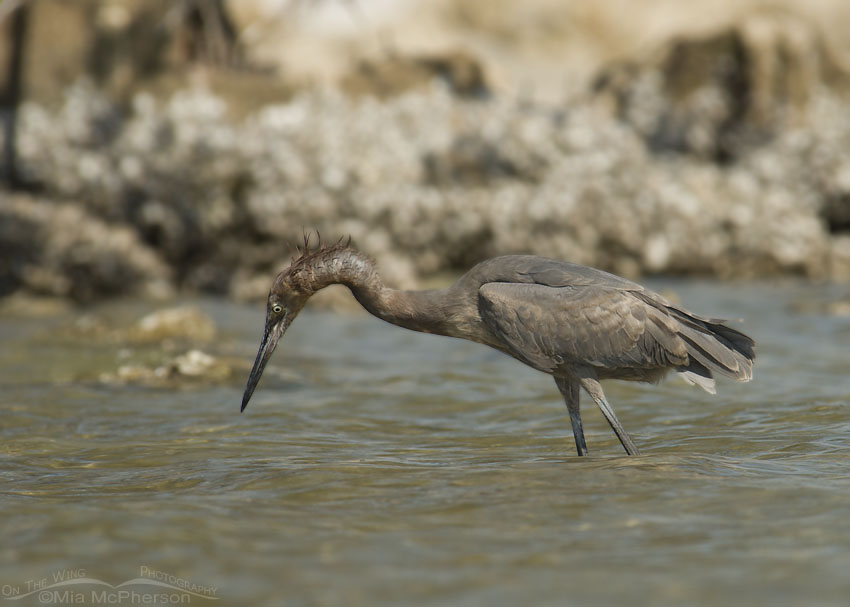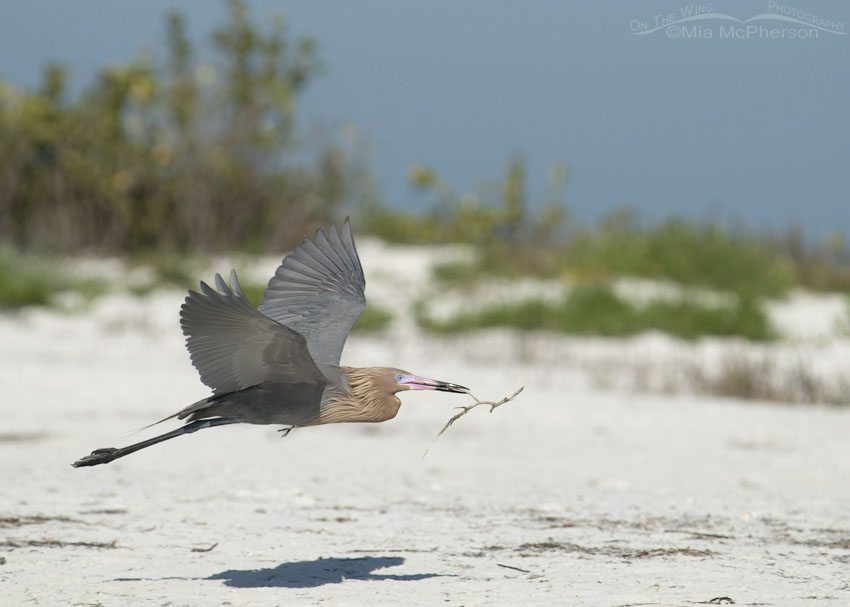 Immature Reddish Egret at Lassing Park – Nikon D200, handheld, f7.1, 1/640, ISO 160, Nikkor 80-400mm VR at 400mm, natural light
Immature Reddish Egret at Lassing Park – Nikon D200, handheld, f7.1, 1/640, ISO 160, Nikkor 80-400mm VR at 400mm, natural light
It has been a while since I have shared any of my Reddish Egret images that I took while living in Florida and I’ve never shared any of the immature Reddish Egret images I took while there here on my blog. I thought it was time to rectify both of those things.
The day I took photos of this immature Reddish Egret was a busy one, my friend Adrian and I had showed my friend Bill Leggett around Fort De Soto County Park and had a blast watching him see the park for the first time and we all came away with great images from that morning. After saying goodbye to Bill I wanted to head over to Lassing Park because I had heard there were some Bonaparte’s Gulls over there. I found the gulls but couldn’t get any decent photos of them because of distance but when I caught sight of an immature Reddish Egret I walked into the water and got ready for the show the egret might put on. It did not disappoint.
 Foraging immature Reddish Egret – Nikon D200, handheld, f7.1, 1/750, ISO 160, Nikkor 80-400mm VR at 400mm, natural light
Foraging immature Reddish Egret – Nikon D200, handheld, f7.1, 1/750, ISO 160, Nikkor 80-400mm VR at 400mm, natural light
The immature Reddish Egret foraged, it danced, it ran, it used its wings as an umbrella over the water to capture fish, it splashed it whirled and it twirled around like a drunken sailor. This dark morph, immature Reddish Egret has more mottling in its plumage than the adult have but it was easy to tell what species this bird was just by its behaviors.
No other North American wading birds exhibit quite the same behaviors that Reddish Egrets do when they are foraging for food. A few wading birds come close with specific behaviors but not close enough.
The photos of the immature Reddish Egret were taken at midday and I wish I had gone back later to photograph the bird in softer evening light. I had a trip to pack for though and didn’t make it back to take more images of this young egret.
By the way, Reddish Egrets also have a white morph and they are gorgeous too.
 Dark morph Reddish Egret in flight with nesting material – Nikon D200, handheld, f6.3, 1/2000, ISO 250, Nikkor 80-400mm VR at 400mm, natural light
Dark morph Reddish Egret in flight with nesting material – Nikon D200, handheld, f6.3, 1/2000, ISO 250, Nikkor 80-400mm VR at 400mm, natural light
I wanted to share a photo of an adult, dark morph Reddish Egret to compare to the immature bird in the photos above, this one is in breeding plumage flying past the dunes at Fort De Soto County Park’s north beach with nesting material in its bill. Note the grayer plumage on the body, wings, chest and tail and how the neck and head have reddish colored plumage. Also note the shaggy, almost mane-like feathers on the head, chest and neck. The adults in breeding plumage have bi-colored bills, pinkish near the base with black towards the tip, they also have blue lores during the breeding season.
This species is listed as “Near Threatened”, populations are declining, their habitat is under threat and rising seas caused by climate change could have a significant negative impact on them.
Immature or adult, dark or white morph, Reddish Egrets are spectacular and fascinating wading birds to see, observe and photograph.
Life is good.
Mia
Click here to see more of my Reddish Egret photos plus facts and information about this species.
These images were taken in February and March of 2009.


Absolutely fascinating. Megathanks.
And the gifts keep on coming! Really marvelous pics with a wonderful narrative. Until this post…I didn’t know reddish egrets even existed. [I thought Egrets were all various shades of white.] At times my lack ornithological knowledge surprises even me. Thanks Mia.
Very nice, a bird we don’t have in Utah.
My daughter will be in Sarasota for Christmas, maybe she can drive up to Fort De Soto.
April, I hope your daughter can get to Fort De Soto, it is a spectacular location. It isn’t too far from Sarasota either.
Beautiful images of a fascinating bird…so glad you posted them!!! You must have a wealth of photos to share!
Patty, I have a lot more Reddish Egret and Florida photos to post in the future. And yes, they are fascinating birds!
Beautiful images, Mia
Thank you Bob.
Nice! Reddish egrets are always interesting.
Thanks Andy.